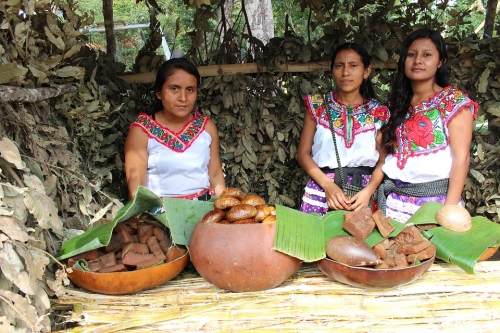One of the largest and most diverse indigenous communities in Latin America exists in Mexico. The indigenous population in Mexico consists of 12.7 million people that make up 13 percent of the country’s population. There are 62 languages spoken by this population. Traditionally, the indigenous communities were defined using language-based criteria, which may have led to an underestimation of the indigenous population. This changed in the 2000 census when indigenous peoples’ organizations pressured the government to include a question based on self-identification. In this census it was found that only half of the population that identified themselves as indigenous spoke an indigenous language. 84 percent of those who spoke an indigenous language also spoke Spanish.Most of the Mexico’s indigenous population lives in the southern and south-central territory of the country. Nearly 80 percent of those who spoke an indigenous language are concentrated in the states of Hidalgo, Oaxaca, Puebla, Yucatán, Chiapas, Guerrero, Veracruz and Mexico city. The main languages of the indigenous people are Otomí, Zapotec, Mixtec, Maya and Náhuatl.
History of the indigenous peoples
Indigenous culture plays a central role in Mexican society, and Mexico takes great pride in its indigenous heritage such as the Aztec and Mayan monuments, the indigenous dances, arts and crafts, and markets, which attract tourists from across the world.
In 1946, the Ministry of Education set up the Independent Department of Native Affairs that started a program of teaching Spanish to the indigenous children. Such programs have diminished indigenous autonomy, language and cultures. Human rights laws officially protect the indigenous populations and the Mexican government has offices of the National Indigenous Institute throughout the country to assist in talks with the indigenous communities. But there have been grievances that the institute adopts a patronizing manner towards the indigenous people. However, there have been times when its workers have passionately defended the indigenous communities, and as a result, have also faced persecution.
The indigenous communities have kept their local forms of organization as a way to preserve their livelihoods and culture. Some communities have seen a dismantling of their traditions due to poverty.
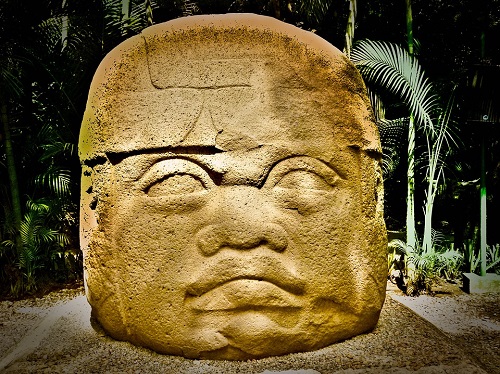
Indigenous communities in Mexico
Before the Americas were colonized, the territory that is currently Mexico was the home of several indigenous groups, each with their own unique languages and cultures. But under the rule of the Spaniards, much of the indigenous population was destroyed due to oppression, disease and war.
The ones who survived slowly began incorporating parts of Spanish culture, such as the Spanish language and religion. This led to a diminishing of many unique traits of the indigenous communities. Many of their original characteristics were also combined with European-based traditions. Currently, there are efforts underway to re-ignite the pride for the Mexican indigenous cultures.
The Olmecs
Believed to be among the oldest civilizations in the world and also the first organized civilization in Mexico, the Olmecs were there before 1000BC. They were an agriculture-based community and were the first to practice ritual bloodletting, which is the tradition of cutting parts of the body to release blood. Little is known about the structure of Olmec society. It is thought to have been hierarchical, based on the massive stone heads which can be traced back to Olmec society and which are believed to be fashioned after the heads of rulers. It is also unclear why and how the Olmec community declined around 300BC, after which a number of other tribes adopted pats of the Olmec culture, such as the Aztecs who came over 1000 years later.
The Aztecs
The Aztecs are, perhaps, the most well-known Mexican indigenous community. In reality, they incorporated a number of individual tribes and then became a single large community. The Aztecs spoke the Náhuatl language and deemed their ancestral home to be a place called Aztlán, a mythical place that some believe to be the Cerro de Culiacan in Guanajuato state.
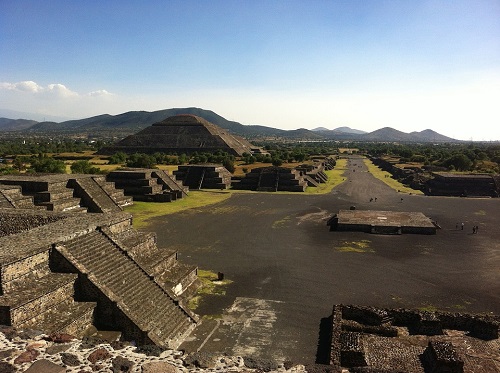
Many different tribes make up the Aztecs and the most powerful group was thought to be the Mexica, who arrived in the Valley of Mexico after exploring the land, when in the 13th century their leader Huitzilopochtli commanded them to change locations. The Mexica were one of the last communities to enter the Valley of Mexico and hence could not find any good land. They kept searching until they found a place in a lake, where legend says, they saw a vision of an eagle perched on a cactus, eating a snake. This vision was thought to be a sign indicating that it was the ideal place to settle down. This settlement later became the renowned Aztec city of Tenochtitlan. Due to the efficient development of their homeland and as a result of intermarriage with other tribes, the Mexica gained in social and political importance within the Aztec Empire.
The Zapotecs
The Zapotec civilization was one that flourished in the Valley of Oaxaca. Their culture dates back nearly 2500 years. Archaeological evidence for this includes tombs, buildings, ball courts and goods in the form of intricate gold jewelry.
The beginnings of the Zapotec civilization can be traced back to the 6th century BC, and they continued to develop until the Spanish conquest, which occurred in the 15th century. Thus their empire continued for much longer than that of the Aztecs, and was centered around Monte Alban, the Zapotec capital.
The Zapotecs were known to have been highly advanced. They did not have a single language of their own, but spoke and wrote various different Zapotec dialects. Many of these still remain in use today among the Zapotec peoples who continue to live in Oaxaca and other areas of Mexico. In fact, Mexico’s first indigenous president, Benito Juarez, was of Zapotec descent.
The Mayans
It is not certain where the Mayan civilization began, although it is known to have started around 2000BC. They are the most renowned of all classical civilizations of Mesoamerica. Their prominence reached its peak around 250 AD, in what is today the southern part of Mexico, western Honduras, Guatemala, and the northern region of Belize.
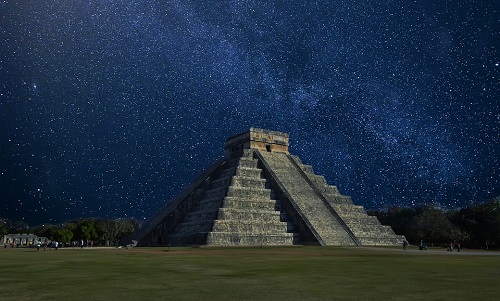
The Mayans inherited the ideas and inventions of earlier peoples and developed calendars, astronomy and hieroglyphic writings, which are known across the world today. They are also known for their detailed architecture such as pyramid-shaped temples and observatories, which were built without metal tools. The Mayan civilization was also skilled in farming and built reservoirs for storing rainwater meant for areas that had scarce groundwater. They were also skilled at pottery and weaving and created trading routes through swamps and jungles, which connected them to other indigenous peoples.
Indigenous traditions in Mexico include the following.
Día de los Muertos (Day of the Dead)
This is based on the belief that souls exist after death. They come to rest in Mictlan, the land of the dead, and every year they return home to pay a visit to near and dear ones. This is the belief underlying the popular Mexican tradition of Dia de los Muertos.
When the Spanish entered Mexico, they witnessed the Aztec people’s elaborate celebrations meant to honor death and the fall harvest. The roots of the holiday known as Dia de los Muertos can be traced back to Aztec times, when the Aztecs celebrated a festival in honor of the Mictecacihuatl, the goddess of the underworld. The catholic Spanish conquistadors, who celebrated All Saints’ and All Souls’ days, also influenced Dia de los Muertos.
Indigenous peoples also honor the Lady of the Dead, La Catrina, who takes the appearance of a skeleton woman with an elaborate hat. Legend says that La Catrina was selfish, rich and greedy and did not help the poor. Today she is mocked every year by wearing ornate clothes and painting the face to look like a caricature of a skeleton.
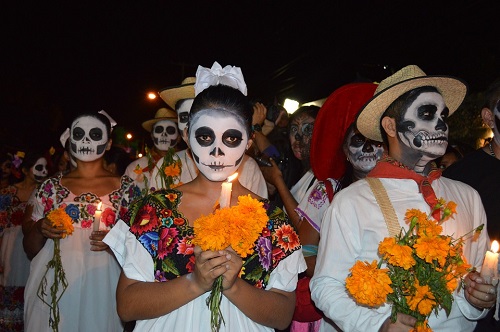
Today, Dia de los Muertos is celebrated on November 1st to coincide with All Souls’ Day. But during the time of the Aztecs, the day was marked on the ninth month of the Aztec solar calendar and was celebrated throughout the month. The indigenous traditions of the Aztecs, Maya and other indigenous cultures have greatly influenced the Mexican approach to death. In earlier times, skulls were displayed as trophies, leant to symbolize death and rebirth. On Dia de los Muertos the graves in the cemeteries are decorated with marigold flowers and colorful streamers, and musicians visit the graves singing songs.
Guelaguetza
Every year in July, the Mexican state of Oaxaca celebrates Guelaguetza. Locally, it is also referred to as “Los Lunes del Cerro”, which can be translated to ‘Mondays on the Hill’. The word Guelaguetza comes from the Zapotec language and translates to an ‘offering’ or ‘gift’. The translation also implies an exchange or a reciprocal act. The Oaxaca state consists of sixteen ethno-linguistic groups with great diversity.
For the festival of Guelaguetza, participants from these groups wear their traditional garments and perform folk dances that are unique to their region. When the dance ends, they throw items that represent their region into the crowds. Guelaguetza is a stunning display of color, song and dance. The diversity is also apparent in the regional foods that are served. Oaxaca has always been known for its delicious cuisine. Oaxacan specialties include the fragrant, tantalizing mole, a dish that is known throughout the world.
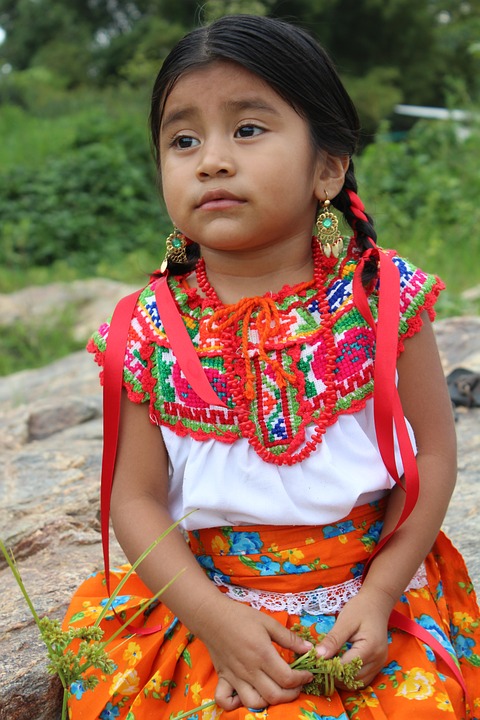
Ulama
This is a ball game that is played in communities in Sinaloa that has its roots in the Aztec form of the Mesoamerican ballgame. It is among the oldest sports that has been continuously played, and is also known for being the oldest sport that made use of a rubber ball. The term ulama is derived from the Nahuatl word ōllamaliztli which means ‘playing of a game with a ball’. Evidence of ōllamaliztli has been seen in almost all Mesoamerican cultures in the region spreading from present-day Mexico to El Salvador. Archaeologists have found rubber balls dating as far back as 1600 BC. The game lost its popularity when the Spanish Catholics restricted the playing of the game on account of religious reasons. The game managed to survive in places such as Sinaloa, where there wasn’t much Spanish influence.
The Mesoamerican ball game is played on temporary courts known as tastei, which is a Nahautl word that means ‘ballcourt’. These courts were drawn in chalk on the dirt and were divided into two sides by drawing a central line. If the ball crosses the end line, called a chivo, it leads to a point for the opposing team. Points, or rayas, are used to keep score. The whole object of ulama is to keep the ball within the boundary and in play. Teams score points when the opposing team misses the ball, hits the ball out of turn, sends the ball out of the boundary, touches the ball with their hands, stops the ball before it touches the central line, or if a player touches a teammate by accident.
Further reading:
• Minority Rights
• National Geographic
• BBC

